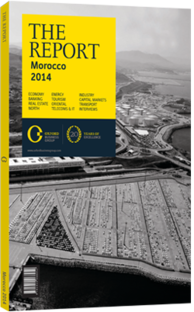OBG talks to Amina Benkhadra, Managing Director, National Hydrocarbons and Mining Office (ONHYM)

Interview: Amina Benkhadra
What progress has been made in terms of shale gas and shale oil exploitation in Morocco?
AMINA BENKHADRA: The country’s shale oil reserves – estimated at 50bn barrels – are the sixth-largest in the world. The development of shale oil has attracted growing interest internationally since 2004, when the prices of oil products started to rise rapidly.
That is why ONHYM has implemented a strategy to revitalise development of these resources, based on partnerships with oil companies such as IES Irkoutsk Energostroy, San Leon Energy and TAQA.
These firms have been conducting studies to adapt and test their technologies with Moroccan shale oil deposits prior to conducting possible feasibility studies. In parallel, since 2011, ONHYM has introduced a framework of incentives regarding shale oil activity through the Hydrocarbons Code.
So far, there are no industrial-scale shale oil production plants in the world, as there are still technical and environmental challenges to overcome. For shale gas in Morocco, in 2010 ONHYM launched studies to assess the potential of the country’s basins.
This facilitated the creation of a preliminary database, which has since proved instrumental in attracting foreign partners such as Repsol, Anadarko and Vermilion Energy, which signed reconnaissance contracts for shale gas exploration.
What is your assessment of the country’s potential in terms of new oil discoveries?
BENKHADRA: Over the past few years Morocco has experienced the arrival of prestigious international oil firms, including major, independent and junior companies, operating onshore and offshore, alone and in consortia. This growing interest is explained by three main factors. First, geological and seismic studies that have already been conducted by ONHYM indicate that Morocco possesses favourable geology and the existence of sedimentary basins with high potential. Second, the Hydrocarbons Code is very attractive to private operators, as it has put in place tax incentives and a legal framework allowing 10-year tax exemptions, exoneration from Customs duties and value-added tax exemptions for exploration-related equipment. In case of discoveries, 75% of income is granted to the company and 25% to the state via ONHYM. Third, over the past decade ONHYM has rolled out a policy of international promotion in Europe, the US and Asia to promote Morocco’s sedimentary basins, hence the presence of 34 international companies in the country.
Discoveries can only be announced after a plethora of surveys have been completed. Many studies have been conducted over the years by the operators. Some of these companies are already drilling in order to verify their original assessment, and 2014 should be a record year for Morocco, as around 30 boreholes should be in operation. The country has seen an increase and acceleration of investments, as operators invested between Dh600m (€53m) and Dh1.2bn (€107m) annually up until 2011, and Dh3.5bn (€311m) in 2013. The investment level for 2014 is forecast to reach around Dh9bn (€800m).
How is reform of the Mining Code progressing?
BENKHADRA: The roadmap regarding reform of the mining sector is still being discussed, but there is already consensus around two key elements. The range of products considered to be within the ambit of the sector will be extended to industrial minerals such as bentonite and clay. We have also introduced the notion of large surface research, to encourage the development of prospecting studies such as soil geochemistry and geophysics. The principle of first-come, first-served will be reinforced.
In addition, we are negotiating for more attractive tax conditions to be implemented so that more international companies invest in Morocco, and we are also encouraging the development of mining and processing facilities, such as lead smelters.
You have reached the limit of premium articles you can view for free.
Choose from the options below to purchase print or digital editions of our Reports. You can also purchase a website subscription giving you unlimited access to all of our Reports online for 12 months.
If you have already purchased this Report or have a website subscription, please login to continue.

